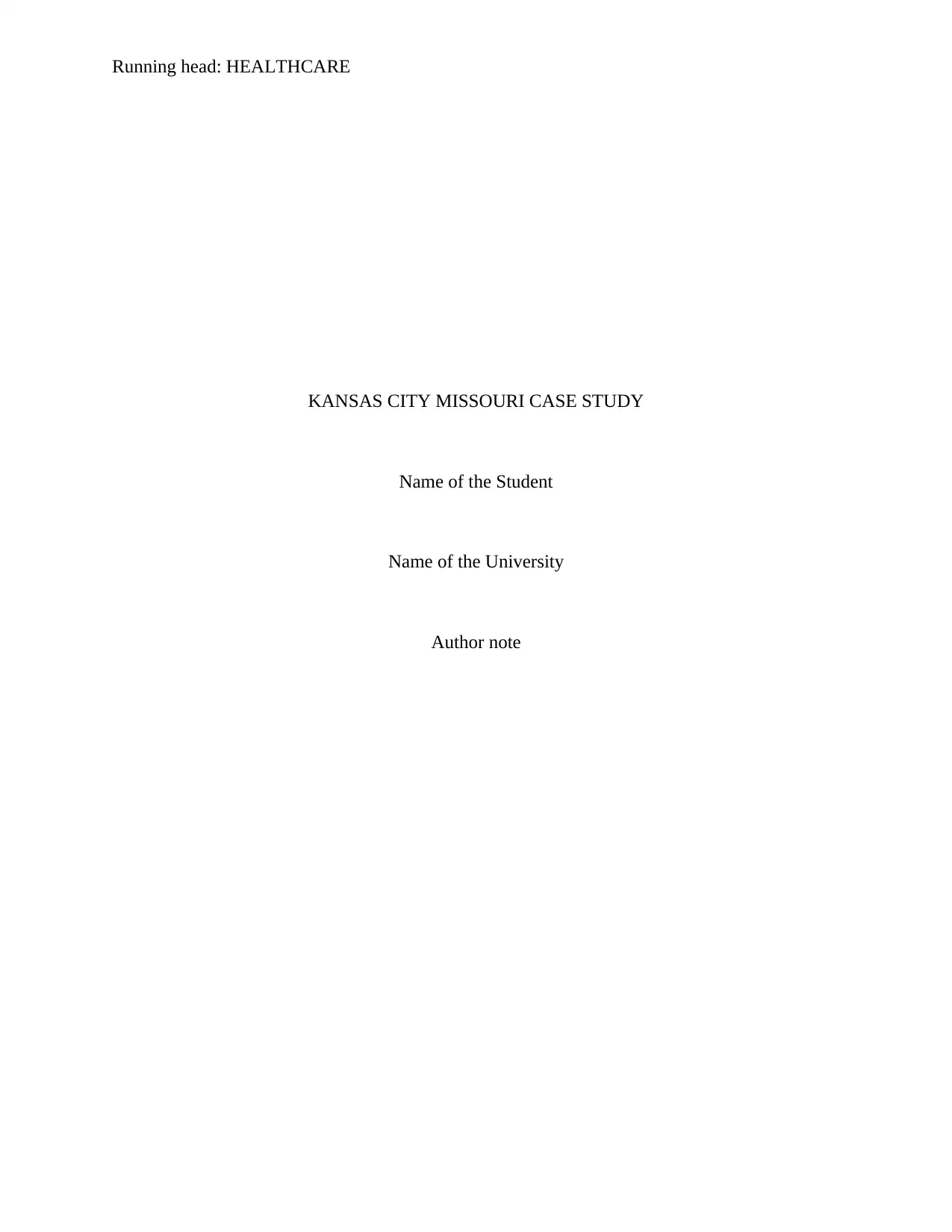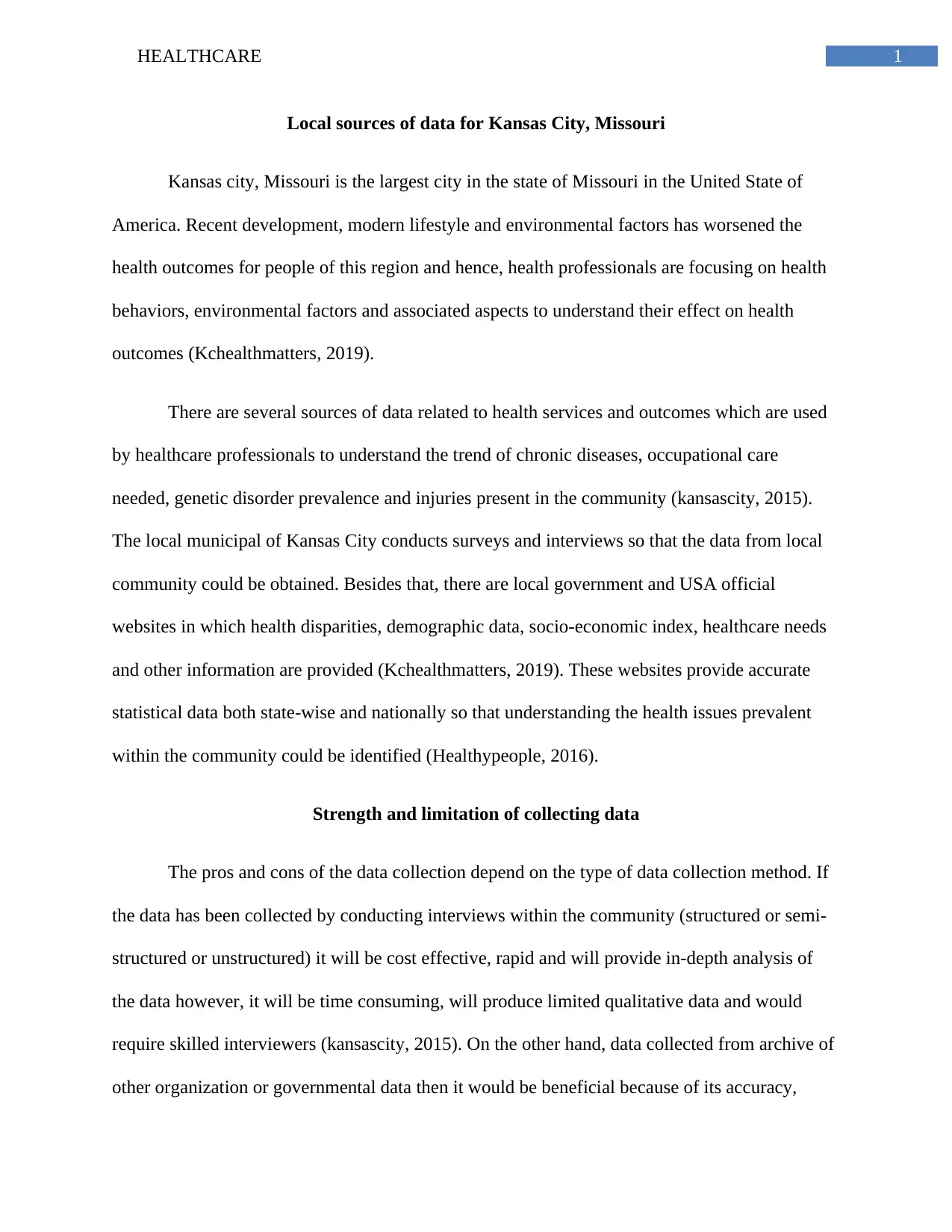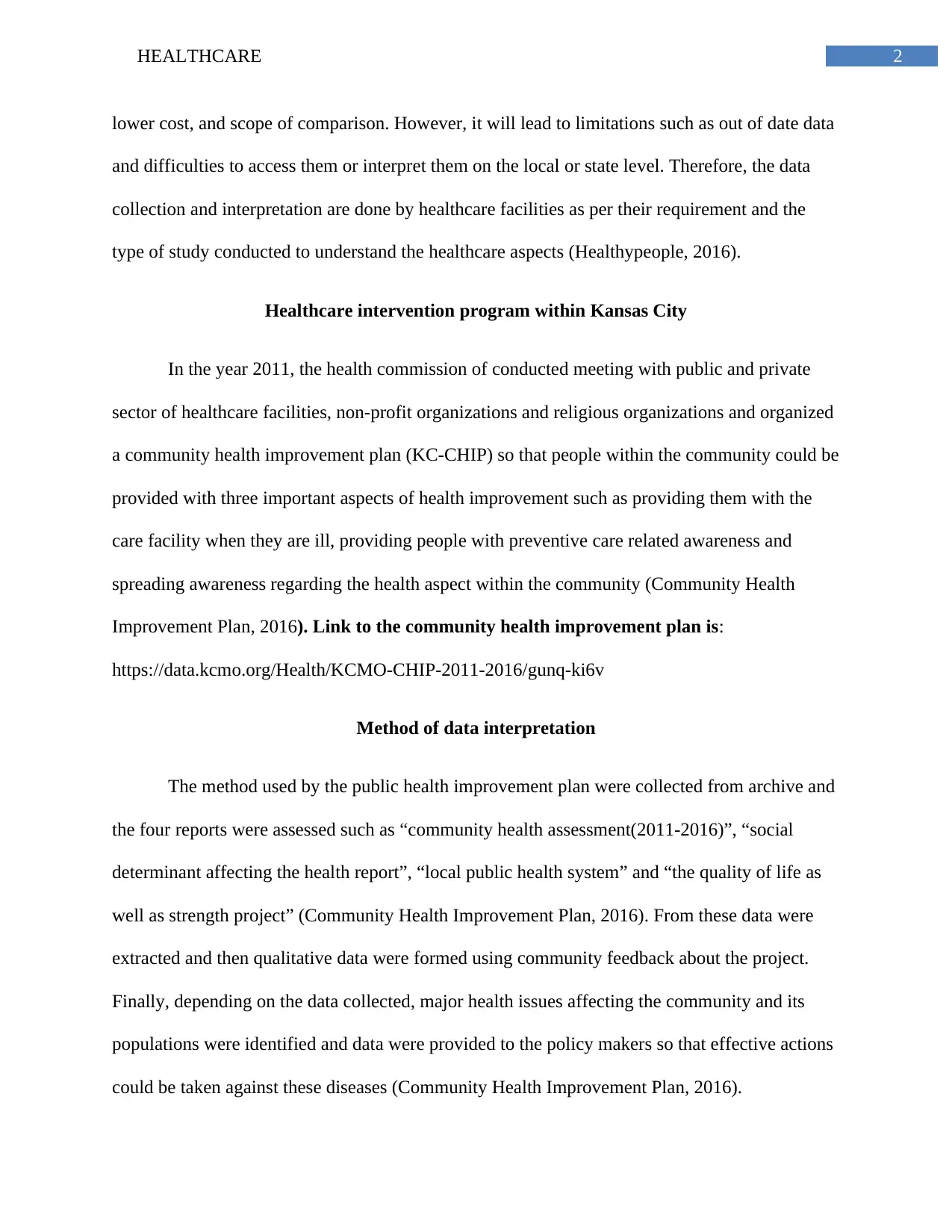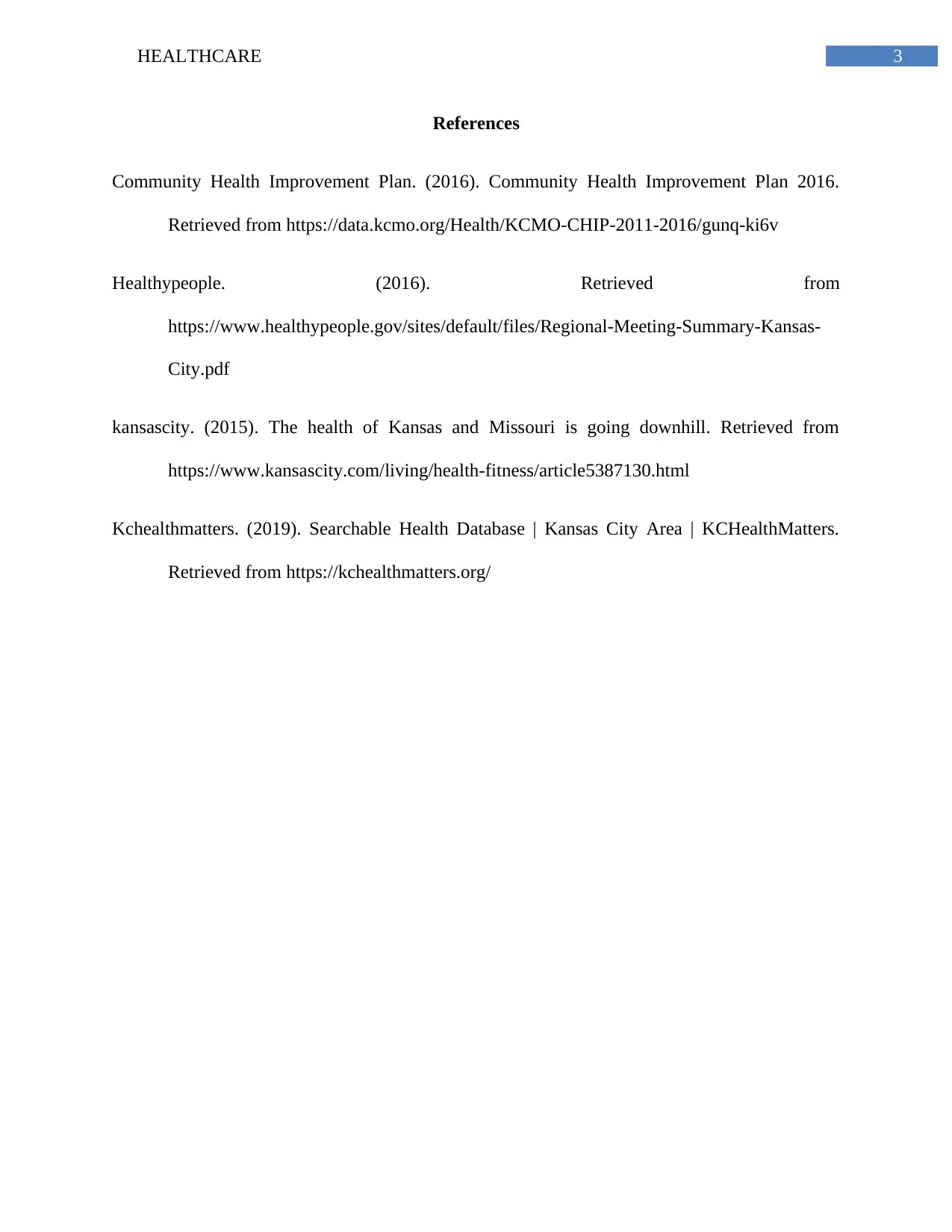Case Study: Healthcare Data and Intervention in Kansas City, Missouri
VerifiedAdded on 2020/05/16
|4
|718
|298
Case Study
AI Summary
This case study examines healthcare in Kansas City, Missouri, focusing on data sources, health outcomes, and intervention programs. It explores the local sources of data, including surveys, interviews, and governmental websites, used to understand health trends and disparities. The study discusses the strengths and limitations of different data collection methods, such as interviews and archival data. It highlights the Community Health Improvement Plan (KC-CHIP) implemented in 2011, which aimed to improve community health through care facilities, preventive care awareness, and health education. The method of data interpretation, involving the assessment of reports and community feedback, is also discussed, along with the identification of major health issues and the provision of data to policymakers. The analysis references relevant sources like KCHealthMatters and HealthyPeople, providing a comprehensive overview of healthcare challenges and initiatives in Kansas City.
1 out of 4











![[object Object]](/_next/static/media/star-bottom.7253800d.svg)